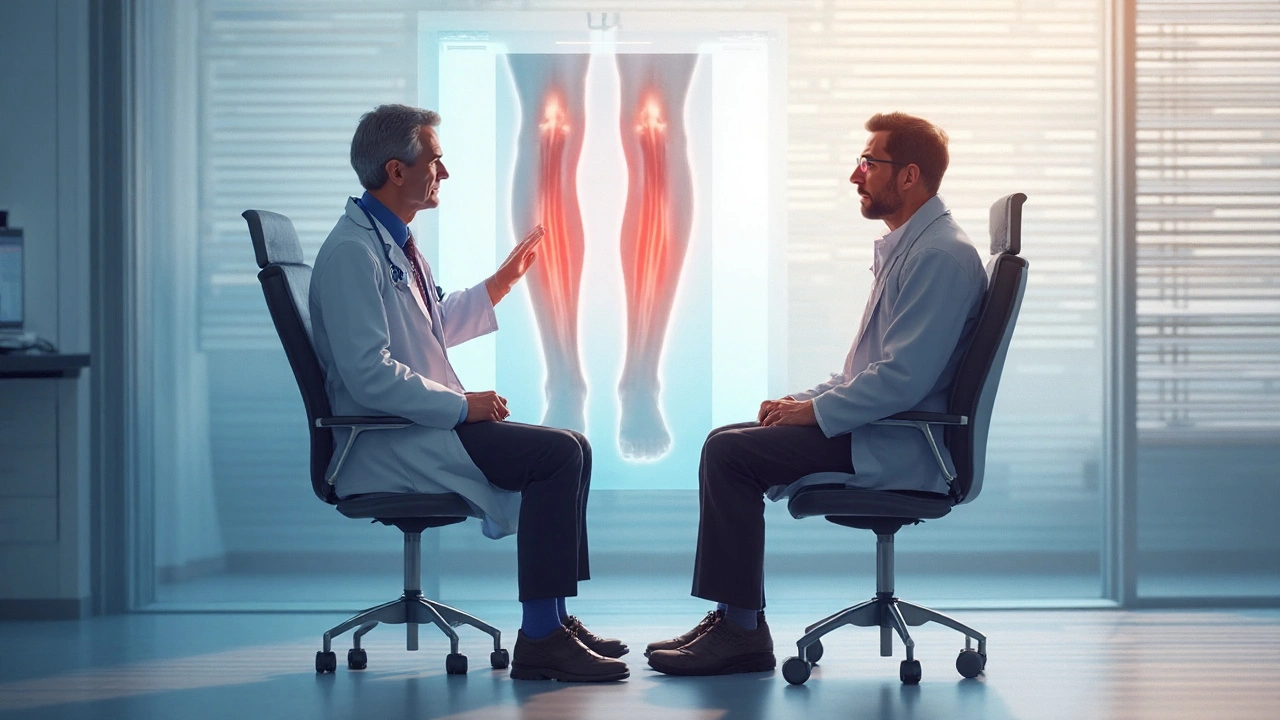Deep Vein Thrombosis (DVT): What You Need to Know
Ever felt a sudden ache in your calf that just won’t go away? It might be more than a muscle pull. Deep vein thrombosis, or DVT, is a clot that forms in the deep veins of your legs. If the clot breaks loose, it can travel to your lungs and cause a pulmonary embolism – a life‑threatening emergency. Knowing the basics helps you spot it early and act fast.
Common Signs and Symptoms
Most DVT cases show up with three tell‑tale signs. First, a swelling that makes your leg look larger than the other side. Second, a warm feeling or a reddish hue around the affected area. Third, a cramp‑like pain that gets worse when you stand or walk. Some people feel a heaviness in the leg instead of sharp pain. If you notice any of these signs, especially after long travel, surgery, or a period of immobility, call your doctor right away.
Don’t forget the less obvious clues. A sudden change in skin temperature, a visible vein that looks bulged, or a feeling of tightness can all point to a clot. DVT can also be silent – no pain, no swelling – which is why regular check‑ups matter if you have risk factors.
How to Prevent and Manage DVT
Most DVTs can be avoided with simple lifestyle tweaks. Keep moving: if you’re on a long flight or road trip, stand up and walk around every hour. Stretch your calves by flexing your feet up and down. If you’re recovering from surgery, follow your doctor’s advice on physical therapy and early walking.
Hydration matters, too. Drinking plenty of water keeps your blood from getting too thick. Wearing compression stockings can help the veins push blood back toward your heart, especially if you have a family history of clots.
When you have medical risk factors – like a recent fracture, cancer treatment, or inherited clotting disorders – your doctor may prescribe blood thinners. These medicines thin the blood just enough to stop clots from growing while still protecting you from bleeding. Always take them exactly as directed and report any unusual bruising.
If a clot is already there, treatment usually starts with a blood thinner called anticoagulant. In severe cases, a procedure called thrombectomy removes the clot, or a filter is placed in the large vein leading to the lungs to catch any future clots.
Recovery isn’t just about pills. Gentle leg exercises, like marching in place or ankle circles, keep circulation flowing. If swelling sticks around, elevate your leg above heart level for 15 minutes a few times a day.
Remember, DVT isn’t a one‑time problem. Even after treatment, you’re at higher risk for another clot. Keep an eye on your weight, stay active, and keep regular appointments with your healthcare provider to monitor any changes.Bottom line: DVT is scary but manageable. Spot the symptoms early, move often, stay hydrated, and follow your doctor’s plan. Those steps can keep a dangerous clot from turning into a life‑threatening emergency.
